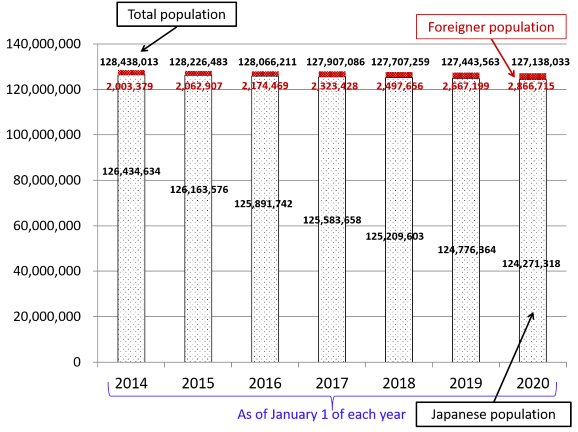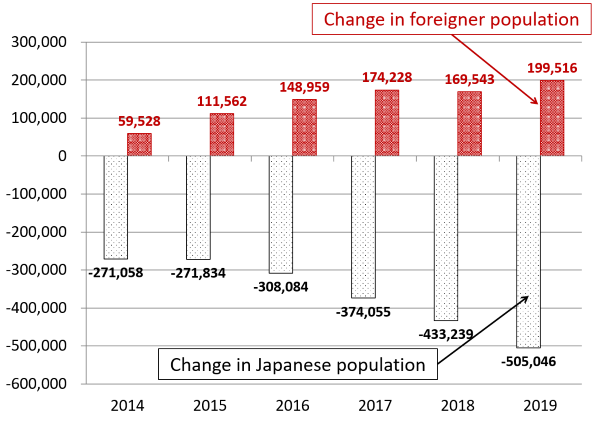Column Finance and the Social Security System 2020.09.01
【Aging, safety net and fiscal crisis in Japan】No.272: While the decline in the Japanese population is accelerating, the population of foreigners is steadily increasing
In this column series, Yukihiro Matsuyama, Research Director at CIGS introduces the latest information about aging, safety net and fiscal crisis in Japan with data of international comparison.
On August 5th, 2020, the Ministry of Internal Affairs and Communications announced Japan’s population data as of January 1st, 2020. The total population was 127,138,033, consisting of 124,271,318 Japanese people and 2,866,715 foreigners (Figure 1). In comparison to the data presented on January 1st, 2019, when the total population was 127,443,563, these figures mark a decrease of 305,530. Figure 2 shows the annual changes in both the Japanese and foreign population. The primary cause of the declining population is the falling number of births (see Column No. 211). However, the number of foreigners increased by 199,516 in 2019, therefore offsetting the decrease of the Japanese population by about 40% (the Japanese population fell by 505,046 in this same period). As shown in Table 1, the percentage of the population that is of working age is relatively low among Japanese people (59.29%), whereas it is extremely high among foreigners (85.33%). This suggests that the acceptance of foreign human resources is an effective means of alleviating labor shortages.
Figure 1 Population of Japan

Source: Ministry of Internal Affairs and Communications
Figure 2 Annual change in population

Source: Ministry of Internal Affairs and Communications
Table 1 Percentage of working-age population as of January 1st, 2020

Source: Ministry of Internal Affairs and Communications
